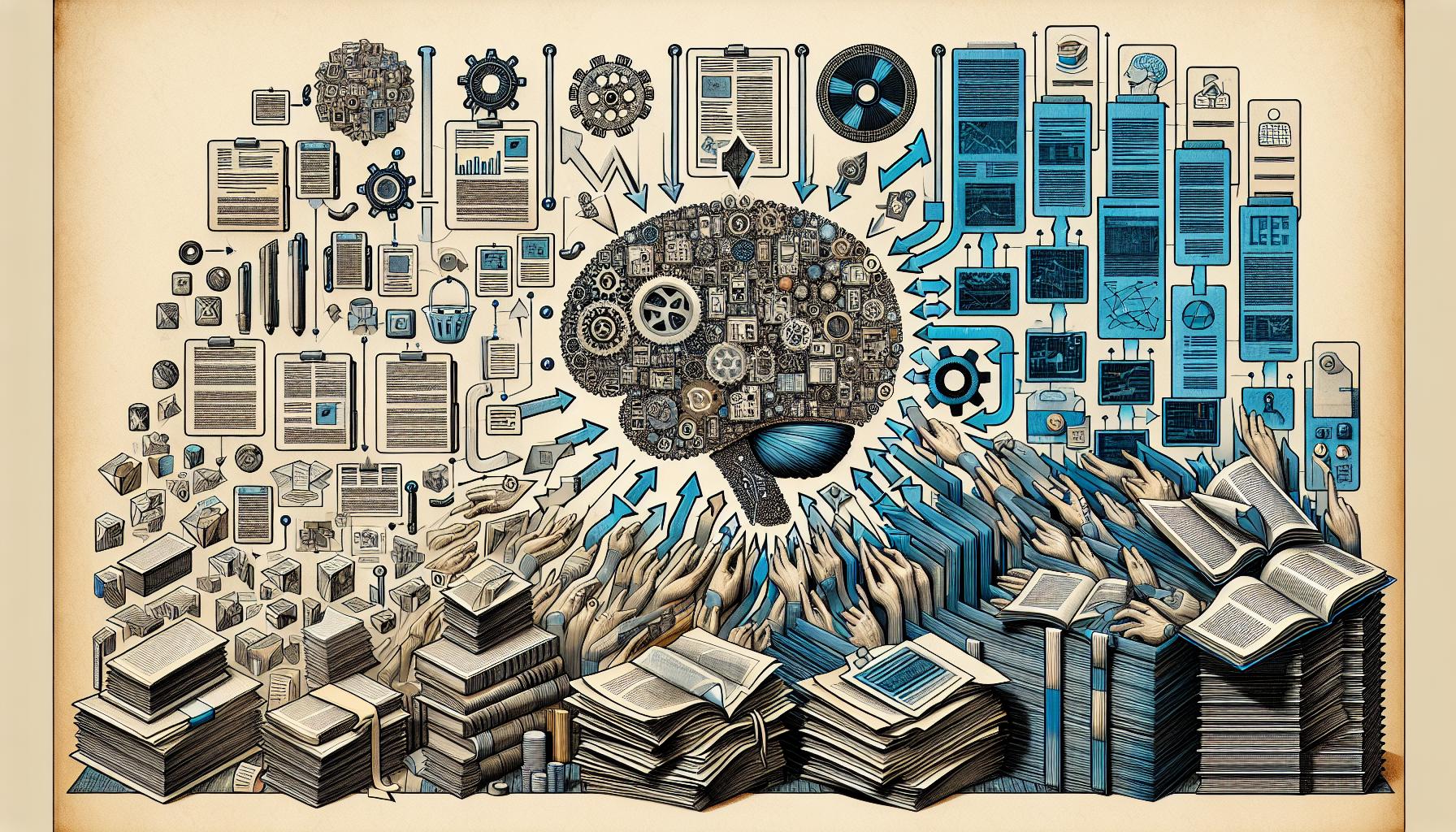Unlocking Company Knowledge: AI-Powered Documentation Conversion

Introduction
In the era of information overload, businesses are continuously producing a massive amount of documentation. From user manuals, guides, research papers, to internal reports, these documents often remain underutilized, locked away in digital storage. However, with the advent of Artificial Intelligence (AI), particularly technologies like Natural Language Processing (NLP) and Machine Learning (ML), companies can now convert this dormant information into structured and valuable knowledge assets. This transformation not only optimizes the use of existing documents but also significantly enhances training materials and operational efficiency.
The Power of AI in Documentation Conversion
AI technologies have shown great promise in processing and transforming extensive documentation. Leveraging AI, businesses can now automatically summarize, categorize, and index hundreds of documents in a fraction of the time it would take a human. This capability is driven by advanced AI techniques such as NLP and ML, which allow for the intelligent processing of text-based data.
Natural Language Processing (NLP)
NLP is a branch of AI that focuses on the interaction between computers and human language. By using NLP, AI systems can understand, interpret, and generate human language in valuable ways. NLP applications in documentation conversion include:
- Text Summarization: NLP algorithms can automatically generate concise summaries of long documents, making it easier for employees to quickly grasp key information.
- Text Categorization: NLP techniques can classify documents into predefined categories, aiding in the organization and retrieval of information.
- Entity Recognition: Through NLP, AI can identify and extract entities such as names, dates, and locations from documents, enhancing data accuracy and usability.
Machine Learning (ML)
Machine Learning, a subset of AI, involves training algorithms on large datasets to identify patterns and make predictions. In the context of documentation, ML can be used to:
- Document Indexing: ML algorithms can index and tag documents based on content, making search and retrieval more efficient.
- Predictive Analytics: ML can analyze document usage patterns to predict future needs and trends, optimizing document management strategies.
- Content Recommendation: ML can suggest related documents or information to users, enhancing knowledge discovery and utilization.
Real-World Applications
Several companies have successfully leveraged AI to unlock valuable insights from their documentation. For instance:
Case Study 1: Tech Corporation
Tech Corporation, a leading software development firm, integrated an AI-powered documentation system to manage its extensive library of technical manuals and guides. By employing NLP and ML, the company was able to summarize complex technical documents, categorize them by topics, and recommend related materials to its developers. This not only improved accessibility but also significantly reduced the time developers spent searching for information.
Case Study 2: Healthcare Provider
A prominent healthcare provider used AI to process patient records and research papers. Through NLP-driven text summarization and entity recognition, the provider could quickly extract critical patient information and relevant research findings. This streamlined patient care and advanced medical research by making vital information easily accessible to healthcare professionals.
Case Study 3: Financial Services Company
A financial services company faced challenges in managing a vast array of legal documents and compliance reports. By integrating an AI documentation system, the company utilized ML to index and tag its documents, enabling quick retrieval of compliance-related information. This improved regulatory adherence and reduced the risk of legal complications.
Benefits of AI-Powered Documentation Conversion
The application of AI in documentation conversion offers numerous benefits, including:
- Efficiency: Automating the summarization, categorization, and indexing of documents saves valuable time and resources.
- Accuracy: AI algorithms can process and analyze documents with high precision, reducing human errors.
- Enhanced Training Materials: By converting documentation into structured formats, companies can create comprehensive and easily digestible training materials for their employees.
- Improved Knowledge Management: AI-powered systems facilitate better organization, retrieval, and utilization of company knowledge, leading to informed decision-making.
- Cost Savings: Reducing the time and effort involved in managing documentation translates to significant cost savings for businesses.
Conclusion
The potential of AI in converting dormant company documents into valuable knowledge assets is vast and transformative. By leveraging NLP and ML technologies, businesses can unlock the full potential of their documentation, streamline training processes, and gain valuable insights that drive operational efficiency. As AI continues to evolve, its applications in documentation conversion will undoubtedly expand, offering even greater opportunities for businesses to harness their knowledge assets effectively.
Keywords
RAIA, AI-Powered Documentation, Natural Language Processing, Machine Learning, Text Summarization, Document Indexing, Company Knowledge




